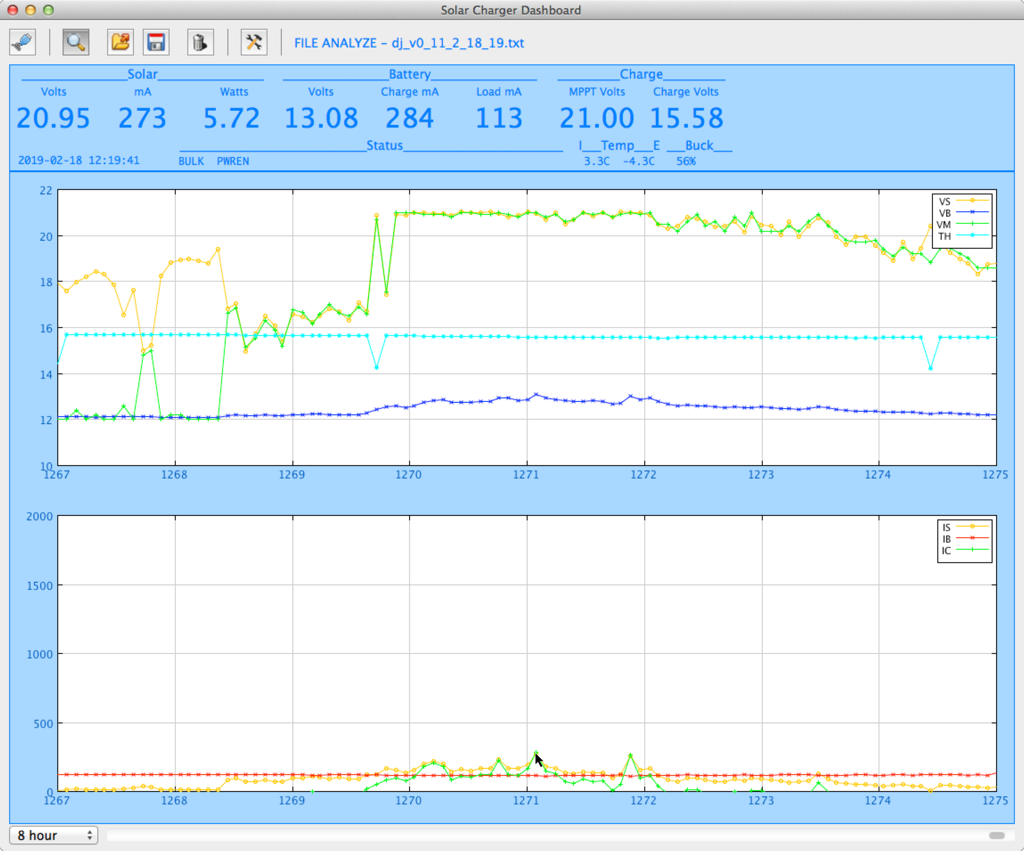Two systems have been braving the [not so bad] Colorado winters for a couple of months now with good success while my progress on the test fixture has been very slow due to other project commitments.

The system above the house with the 25 watt panel with no obstructions has remained up pretty much non-stop with only a couple of low-battery shut-downs. I even try to run the Christmas lights on it most nights for an hour or two.
The system near the house, sitting on the ground in the trees, with a 40 watt panel and oldish battery, has gone down with a low-battery four times since Christmas and rebooted, if only for part of a day the next day in all cases.
Both systems require about 2.6-2.9 AH per day and seem to be able to remain operational even in mostly overcast days when panel production is pretty low. Snow on the panels is the worst and results in almost no solar production at all. The graph below shows a typical overcast week with low production that resulted in a low-battery shutdown. The X-axis shows days. As you can see the charge cycle was often not able to complete the Bulk charging phase (terminated with the battery reaches the higher threshold value).

Zooming in on a typical low-production day shows the system barely holding its own during the day (X-axis in units of hours).

However a sunny day can produce a lot of power as shown below where the system (40 watt panel) started off shut-down and was able to fully charge the battery in about four hours. This graph shows the system limiting current taken from the panel to 2A. The step in the battery and threshold voltage at about hour 1056 is the transition from Absorption charge to Float charge when the battery was fully charged.

The MPPT algorithm holds the panel voltage lower when it can't supply enough current (for example the system in Bulk charge phase but there isn't much light) and it lets it float higher when limiting solar input (for example when in Absorption charge phase and the buck is limiting). This makes sense and looking over days of output shows the algorithm behaving.
Now to finish the test fixture and start building this damn thing...
 Dan Julio
Dan Julio
Discussions
Become a Hackaday.io Member
Create an account to leave a comment. Already have an account? Log In.